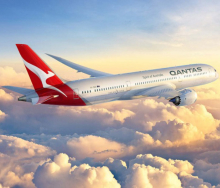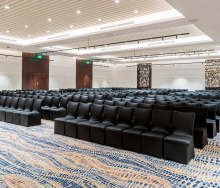NOT many names have
been as closely linked to
the ups and downs of the
South African travel industry
as that of the Foggitt family,
headed by industry doyen, John
Gledhill Foggitt, who passed
away in January, a month short
of his 97th birthday.
John is credited with having
pioneered much of the early
outbound tours from South
Africa and with being the first
to have chartered ships for
South African cruises from as
early as 1978.
Born in Kenya on February
19, 1918, John came to South
Africa when he was three
years old. Seeking adventure
as a young man, he served
in the navy and army during
World War II, whereafter he
worked as a government
auditor.
In 1956 he set up an
immigration scheme bringing
hundreds of skilled British
workers to South Africa on
Trek Airways. However, as
numbers grew his attempts to
charter planes were frustrated
by government protection of
South African Airways. Using a
loophole in the law, he set up
the Traveller’s Facilities Club
(TFC) in 1957, offering tours in
addition to flights.
TFC Tours chartered the first
flights from South Africa to
many destinations not served
by commercial services from
Johannesburg at the time,
including Hong Kong, Bangkok,
Taipei, the Seychelles, Rio
de Janeiro, Teheran and
Istanbul. It arranged the
first South African tours to
countries such as Egypt,
Morocco, Cuba and Vietnam
and became the biggest
travel company in South Africa
with offices in Johannesburg,
Pretoria, Durban, Cape Town,
the Seychelles, Hong Kong,
Bangkok, Taipei, Tokyo, Miami,
San Francisco, Los Angeles
and London.
In 1978, TFC Tours chartered
its first cruise-liner, the Victoria,
operating just four cruises
and carrying a total of 2 468
passengers for the entire
season.
Over the years, the company
chartered many great ships,
but the stories of the ill-fated
Achille Lauro and Oceanos
will remain uppermost in the
minds of South Africans.
While preparing for a
season in South Africa, the
Achille Lauro was hijacked by
Palestinian militants off Egypt
in October 1985 with South
African travel agents on an
educational on board. It went
on to operate successfully
in SA waters between
1985 and 1990, carrying
thousands of passengers
and playing a major role in
establishing cruising as a local
holiday option. MSC Cruises
purchased the vessel in 1992
but in 1994 it developed an
engine fire en route to SA from
Europe and sank off the coast
of Somalia.
On August 4, 1991, the
Oceanos famously sank during
a storm off the Transkei Wild
Coast. The captain and crew
abandoned ship but all 571
passengers survived thanks to
the heroism of a few on-board
entertainers and the biggest
airborne rescue mission to
date by the SA Navy.
John had sold TFC Tours
in 1990 to a property
development company but
the sinking of the Oceanos
resulted in TFC Tours closing
down. The Foggitts then
started Starlight Cruises. John
officially retired but remained
involved in a non-executive
capacity and kept abreast of
all activities right until the end.
Starlight Cruises went on
to successfully open up
cruising to the SA market with
its popular programmes of
local cruise itineraries from
Durban and Cape Town. After
a 16-year association, Genevabased
MSC Cruises acquired
Starlight Cruises in 2010 and
the local operation became
MSC Cruises South Africa,
embarking up to 145 000
passengers in 2014. Ships
that stand out because of
their popularity over the years
are the Melody, Monterey
and, more recently, the MSC
Sinfonia.
John’s children and
grandchildren continue to
‘man the ship’, with daughter
Daphne Osborne ceo, son
Allan Foggitt sales and
marketing director; and
grandsons Kevin Osborne and
Lee Foggitt involved on the
operational side. Son, Clifford
Foggitt, has retired from the
company.
MSC Sinfonia returns to
South Africa on November
19 with 200 new cabins
thanks to an extended hull
and revamped with new
entertainment options,
shops and technological
advancements.
Travel industry doyen remembered for his pioneering role
13 Apr 2016 - by Hilka Birns
Comments | 0













